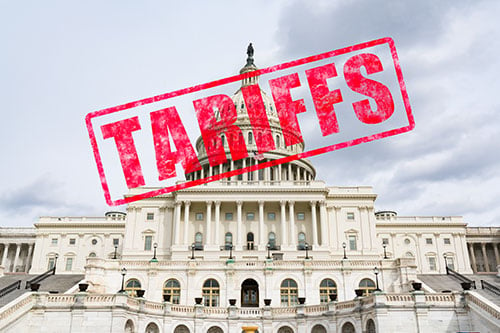
Secretary of Commerce Wilbur Ross has formally submitted to President Trump the results of the Department of Commerce’s investigation into the effect of imports of automobiles and automobile parts on the national security of the United States.
The global auto industry will now have to wait for the President to make his final decision. Will he decide on new double-digit tariffs for every automotive parts import into the United States? Will there be a product exclusion request process? Will only “targeted” automotive parts be subject to these new tariffs? And would these tariffs apply to automotive parts imports from all countries, including Canada and Mexico?
This article by Arent Fox LLP brings readers up to date on this latest and fast-moving development. This latest action on the trade front has captured the attention of board rooms across the AIAG membership.
On May 23, 2018, upon the request of the White House, the U.S. Department of Commerce initiated an investigation on whether the import of vehicles and parts presents a national security risk to the U.S. economy. On February 17, 2019, within hours of its 270-day deadline, the Department concluded its analysis and formally sent its findings to the President.
By statute, the president will have ninety (90) days to decide whether to agree to the report and decide on the actual tariff rate; to disagree with the report’s findings; or ignore the report all together.
If the president decides a new tariff is necessary under Section 232 of the Trade Expansion Act of 1962, automotive executives will be facing new decisions and new calculations – from supplier to producer to assembler. Some industry observers note that the recent 232 tariffs on steel and aluminum imports could shed some light on what can be expected next and when.
In those cases, the president did not take the full 90 days to make his decision. The Commerce Secretary sent the investigation report on January 11, 2018, the President concurred in a Proclamation on March 8, 2018, and double-digit tariffs were imposed beginning March 23, 2018.
Equally notable is that similar to the approach the Commerce Department took on imports of steel and aluminum, the 232 report on automotive tariffs was not released immediately.
Depending on which automotive products and from which countries, the Department’s recommendations could include broad tariffs on cars and parts or narrower targeting of tariffs based on specific components and technologies.
Automotive executives should consider how their products, plants, customers, and suppliers could be affected.
David R. Hamill is a partner and Birgit Matthiesen is director, North American manufacturing, for Arent Fox.
They can be reached at birgit.matthiesen@arentfox.com and david.hamill@arentfox.com.


